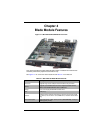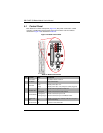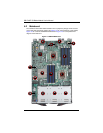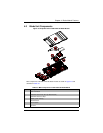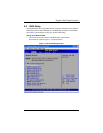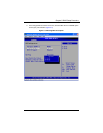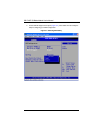
5-1
Chapter 5
RAID Setup Procedure
Each SBI-7426T-S3 blade module supports three hard drives, which may be used to
create a RAID array. For the blade’s B8DT6 mainboard when using SATA drives, use
the BIOS setup to configure for either the Intel or Adaptec RAID controller and utility:
use the Intel driver for Windows and the Adaptec driver for Linux - both are included on
the CD that ships with the system.
When using SAS drives, use the LSI MegaRAID Software Configuration Utility found on
your system’s CD-ROM disc for your RAID setup. Go to http://www.supermicro.com/
support/manuals/ to download the installation guide and manual for this utility.
Important Notes
Please read the following notes and warnings before setting up your RAID array.
NOTE: Before adding a new drive to an array, back up any data contained on
the new drive. Otherwise, all data will be lost.
NOTE: If you stop the BUILD or CLEAR process on a RAID 1 from the ACU, you
can restart it by pressing <C
TRL> + <R>.
NOTE: A RAID 1 created using the QUICK INIT option may return some data
miscompares if you later run a consistency check. This is normal and is not a
cause for concern.
NOTE: The ACU allows you to use drives of different sizes in an array.
However, during a build operation, only the smaller drive can be selected as the
source or first drive.
NOTE: When migrating from single volume to RAID 0, migrating from a larger
drive to a smaller drive is allowed. However, the destination drive must be at
least half the capacity of the source drive.
WARNING: Adaptec does not recommend that you migrate or build an array on
Windows dynamic disks (volumes), as it will result in data loss.



